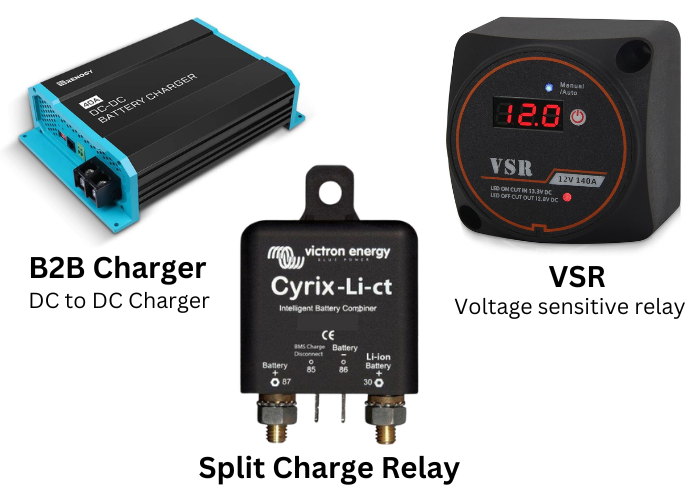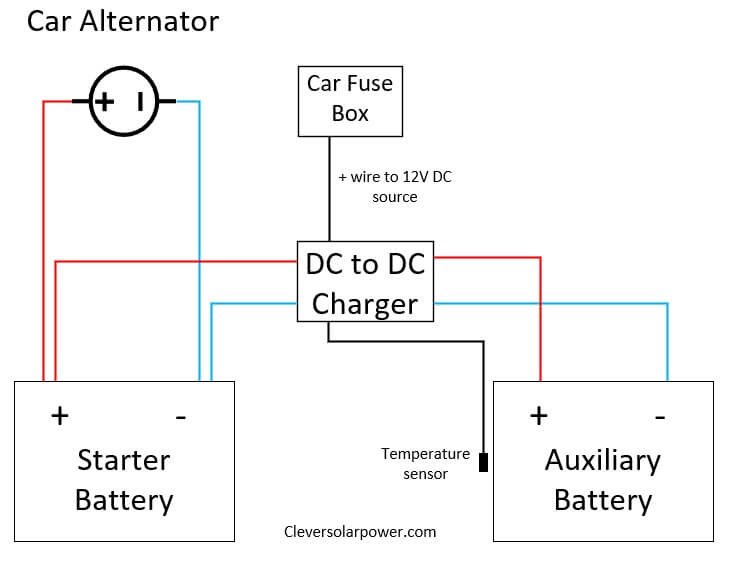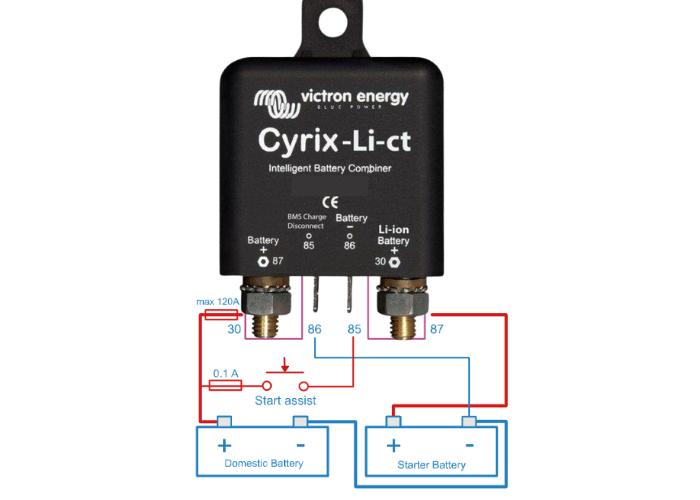The difference between a DC-to-DC charger and a split charge relay lies in their functionality, efficiency, and how they charge batteries in vehicles, particularly in dual battery systems often used in RVs, boats, and off-grid setups.

DC to DC Chargers are ideal for modern vehicles with smart alternators, offering advanced, multi-stage charging for a variety of battery types, including Lithium and AGM, making them perfect for complex systems requiring precise power management.
Split Charge Relays provide a simple, cost-effective solution for older vehicles and basic dual battery systems, facilitating straightforward charging without advanced features, suitable for budget-conscious installations.
Voltage Sensitive Relays (VSRs) offer a middle-ground solution, automatically managing battery charging based on voltage levels, ideal for systems that need more sophistication than a split charge relay but not the full functionality of a DC to DC charger.
What is a DC to DC Charger?
A DC to DC charger is an advanced electronic device crucial for dual battery systems in modern vehicles, boats, and RVs, offering efficient and controlled charging for secondary batteries.

It’s particularly valuable in systems with smart alternators, as it ensures consistent and optimal charging regardless of alternator output.
These chargers provide multi-stage charging profiles suitable for various battery types, including Lead-Acid, AGM, Gel, and Lithium, extending battery life and performance.
Additionally, they function as battery isolators, preventing the auxiliary battery from draining the starter battery. With adjustable settings to cater to different battery needs, DC to DC chargers are ideal for applications requiring stable and reliable power for sensitive electronics, making them a preferred choice for complex and demanding dual battery setups.
Example of a DC to DC charger: Renogy DC to DC Charger or Victron Orion TR Smart (more voltage options)
What is a Split Charge Relay?
A Split Charge Relay is a cost-effective and straightforward device used in dual battery systems, primarily in older vehicles, RVs, and boats.
It operates by connecting the starter and auxiliary batteries for simultaneous charging when the engine is running, typically triggered by the ignition system. This ensures that the auxiliary battery is charged while driving, without draining the starter battery when the engine is off.

While simple and easy to install, split charge relays lack advanced features like voltage sensing and are not ideal for modern vehicles with smart alternators or for batteries requiring specific charging profiles, such as Lithium or AGM batteries. They are best suited for basic, budget-conscious installations where the electrical demands are straightforward.
A split charge relay is also called a battery combiner or battery isolator.
Example of a Split charge relay: No Brand or Victron Battery Combiner
What is a VSR?
A VSR, or Voltage Sensitive Relay, is a component commonly used in dual battery systems, particularly in vehicles, boats, and RVs. It’s designed to automatically manage the charging of two separate batteries from a single charging source, like an alternator, without the risk of draining the primary starting battery.

Example of a VSR: Keyline Chargers (not programmable) and No Brand (adjustable
Frequently Asked Questions
Difference Between Split Charge Relay and a VSR
Lead-Acid and LiFePO4 Compatibility
Lead-Acid Batteries Can be charged with both split charge relays and DC to DC chargers, but DC to DC chargers are preferable for optimal charging and battery health.
LiFePO4 Batteries Should ideally be charged with DC to DC chargers that offer specific Lithium charging profiles for safe and efficient charging. Split charge relays are generally not suitable for these batteries.

I’m an off-grid enthusiast. I created this website to give clear and straight-to-the-point advice about solar power. I’m also the author of the book ‘Off-grid solar power simplified‘. Read more about me on my about page, check out my Youtube channel, or send me a message.